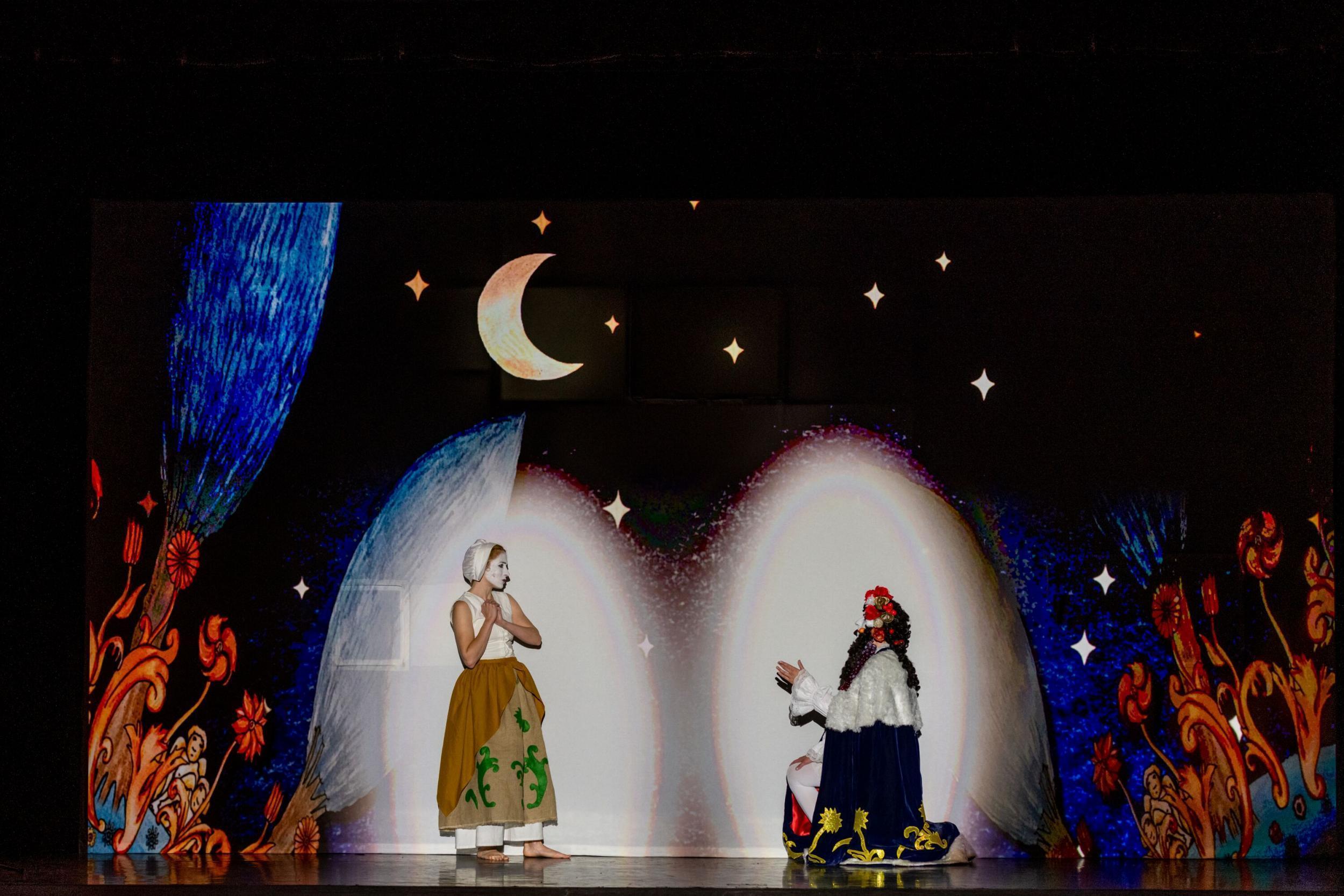Edinburgh International Festival, Roots review: Beautiful and meticulous, but still a knockabout sketch show
The Margate-based 1927 group’s work harks back to the traditional days of silent cinema and before

Your support helps us to tell the story
From reproductive rights to climate change to Big Tech, The Independent is on the ground when the story is developing. Whether it's investigating the financials of Elon Musk's pro-Trump PAC or producing our latest documentary, 'The A Word', which shines a light on the American women fighting for reproductive rights, we know how important it is to parse out the facts from the messaging.
At such a critical moment in US history, we need reporters on the ground. Your donation allows us to keep sending journalists to speak to both sides of the story.
The Independent is trusted by Americans across the entire political spectrum. And unlike many other quality news outlets, we choose not to lock Americans out of our reporting and analysis with paywalls. We believe quality journalism should be available to everyone, paid for by those who can afford it.
Your support makes all the difference.There’s something about the setting of the Church Hill Theatre which is perfectly suited to this latest Edinburgh International Festival production by the Margate-based 1927 group. Amid the city centre bustle of the Fringe, it’s withdrawn from the main action out in the genteel and affluent residential neighbourhood of Morningside, where there is quiet around and a feeling of relaxed tradition in the air.
This is an accidental – but worthwhile – sense of mise en scene, because 1927’s work harks back to the traditional days of silent cinema and before, blending the Edwardian fascination with the most rudimentary film entertainments with a joy in live storytelling for the stage which is positively Victorian. An associate company of HOME Manchester and the Roundhouse in London, which has toured to 40 countries around the world, its method of storytelling is unique.
For Roots – 1927’s first appearance in Edinburgh since 2015’s The Magic Flute for the EIF, although it was the Fringe which helped make its name almost a decade before – writer and co-director Suzanne Andrade has taken inspiration from the British Library’s “Aarne index” of folklore stories from around the world. From this, she’s taken simple one-line ideas seen therein and scaled them up into this anthology show, which she performs alongside co-director Esme Appleton and additional performers Francesca Simmons and David Insua-Cao.
The creative delivery of the tales is outstanding, with a projected backdrop featuring detailed black and white cartoons overlaid above performers and set, giving the impression of a live-action film being played. We see a greedy cat eat the world, two fishing parents eat their child (which is not literally seen, fortunately) and – in possibly the most contemporarily relevant section – a character invite the physical personification of poverty into their house.
It’s beautifully scored by Lillian Henley with music which is creepily light-hearted, and the ingenuity of the staging inspires reactions as enthusiastic as those which greet some of the more creepily edgy tales. For all that it’s a beautiful and meticulous diversion, however, it’s essentially a knockabout sketch show with a greater budget than most on the Fringe.
Join our commenting forum
Join thought-provoking conversations, follow other Independent readers and see their replies
Comments